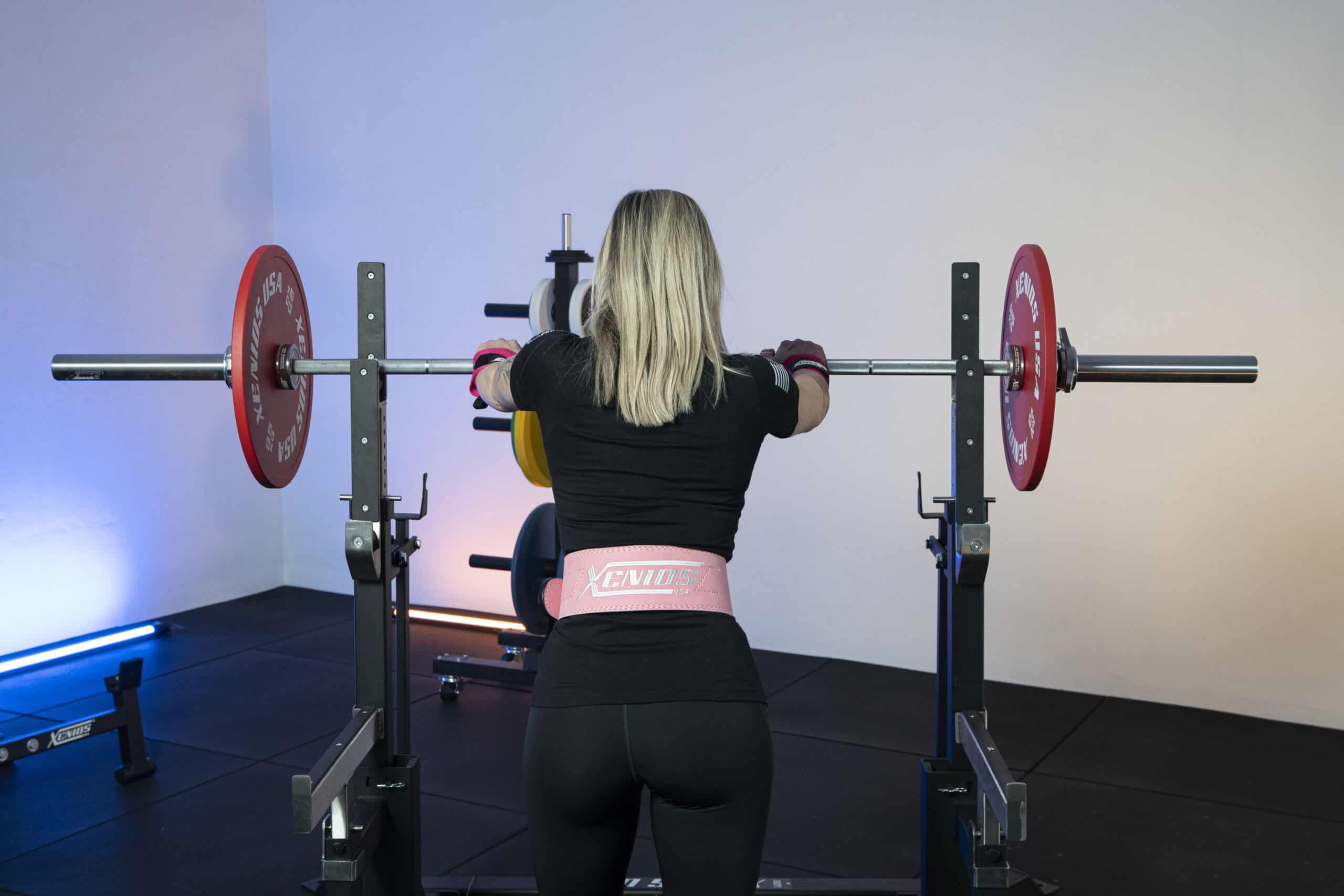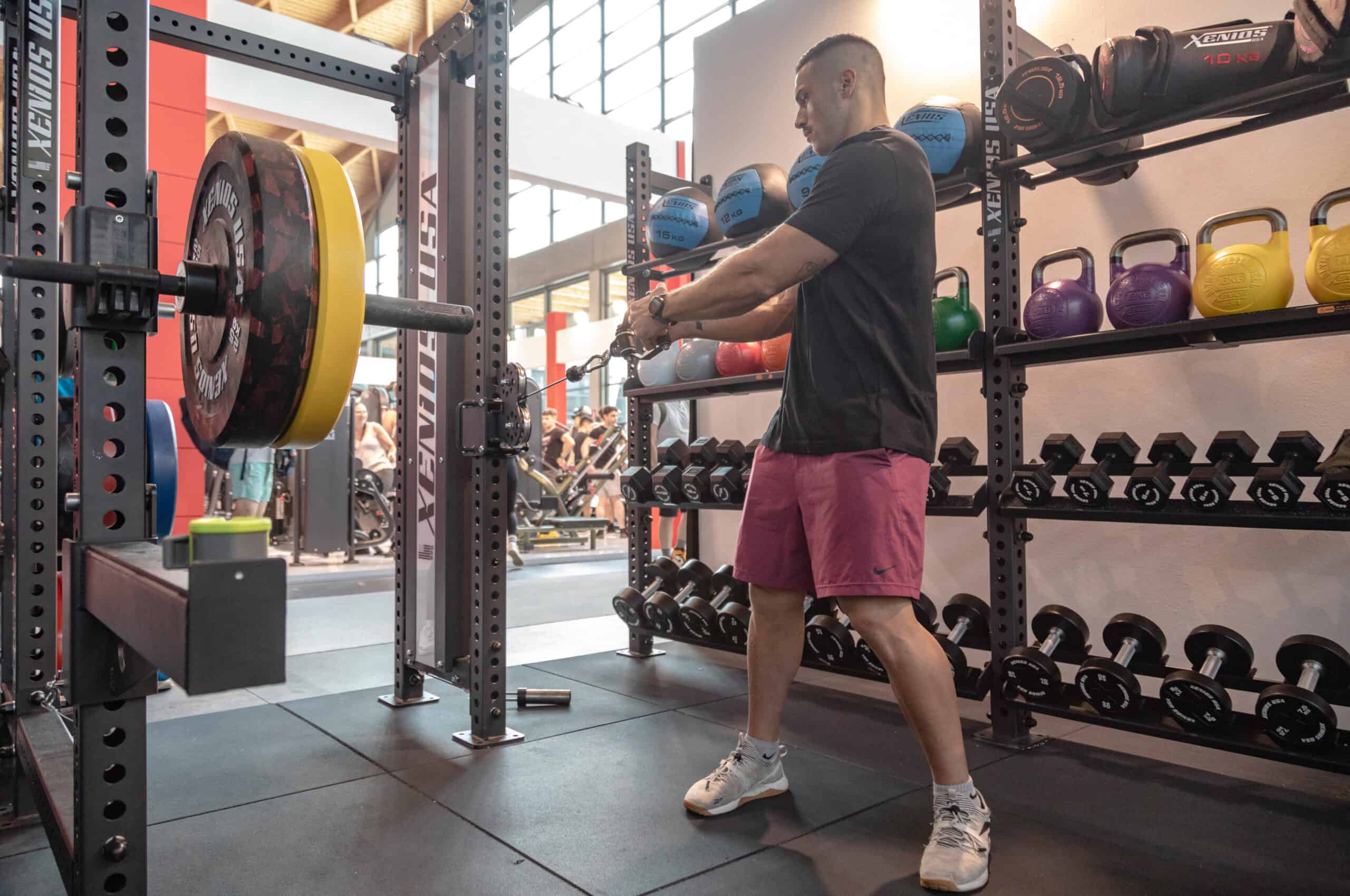Interview with Calle Flauto, founder and artistic-technical director of Fitwork Italia, a company that offers fitness and wellness programs for professionals.
In this second episode of Functional Training with the author of the book “Functional Personal Trainer” as a special guest, we are going to see together:
-Why did I approach functional training
-Benefits of functional training
-Functional training equipment
Francesco Perticari
Hello everyone, here we are with our podcast about functional training. Today we have a friend, a true friend. He’s one of those people I met many years ago when Reebok had a substantial team of trainers and fitness professionals importantly dedicated to fitness and its promotion. Calle Flauto, who is here with me, is one of those trainers, we’ve known each other for a lifetime, and I’ve involved him in this podcast.
First of all, because he has been a personal trainer for many years, because he is one of those who knows functional training well, and he somehow played a part in introducing it to Italy, he was one of the first to approach this type of training. And because he wrote a book called “Functional Personal Training” and I would like to learn more from him about functional training applied to personal training.
I may have forgotten something from your extensive resume, which includes the fact that you are a choreographer, an international yoga and pilates instructor, and, I can say this with confidence because I know you well, a well-rounded fitness expert. But if there is anything missing from the introduction, you’ll let me know.
Calle Flauto
Good morning everyone. Hi Francesco, yes, I can confirm that Francesco is truly a long-time friend. Yes, I’ve done a lot of things over the years, I’ve been a Reebok University Master Trainer, responsible for courses in Italy for all sectors, I’m an International Yoga Teacher, a personal trainer, and the founder of a training school called Fitwork Italia. I’ve been a choreographer, working in classical, modern, and contemporary dance, and I was one of the first to get involved in what is now called functional training. But now I’ll try to explain better, Francesco knows I don’t love the term “functional” all that much… but in fitness slang, let’s say it’s the most direct way to convey a certain type of training, so…
FP
Sorry to interrupt, but I’d like to ask you a question.
In the old days, what sparked your curiosity about functional training? Because I know that you, along with some other trainers, were among the first to try to introduce in Italy a tool that is now in every gym, maybe in every home. And once, ten to twelve years ago, it was relatively unknown: that equipment is the kettlebell. What piqued your interest in this type of training?
CF
Well, I was lucky enough to have done a study holiday in the United States when I was 18 and I stayed there for six months. During those months, I had already seen different things that weren’t present in Italy at that time. In Italy, there was aerobics or bodybuilding, to put it simply, the music room was an empty room with no equipment and there I saw things that I had already tried on myself, developed on myself, but it was something, let’s say, idle. It was purely personal.
Then I was lucky enough to be chosen by Reebok, so I started studying with Reebok University. It’s one of those things that you can’t argue against, Reebok University was very advanced with its programs at the time. Keep in mind that we couldn’t introduce in Italy some programs because they were too ahead of the market, in the sense that they were things that would arrive in the following years. The first time I went to do a lesson on these functional exercises, the thing that shocked me the most, being a dancer and choreographer, someone who taught classes and did a lot of things, was my inability to handle a specific exercise or movement. That was the trigger that made me think, “Wow, how is it possible that I can’t do this thing?” But yes, it was definitely possible because, starting to exercise, there’s the training for muscle function or in relation to muscle function during the type of work you’re doing, which changes depending on what you’re doing. So if you train a muscle the same way all the time, you never adapt it to be a stabilizer or neutralizer. So, it’s clear that it will only repeat and be manageable for that specific function.
And this was what truly drew me into this world. In addition to this, although I felt very fit, I was 24 years old and had three herniated discs because I jumped around like a cricket, did weightlifting, well, anyone with a bit of age in our field knows what we did. So I started rehabilitating my body, trying to develop movements with a sort of awareness. Let’s put it this way, you need to have awareness.
This is why I sometimes say that the term “functional” is too generic, because in my opinion it doesn’t specifically indicate what integrated strength training should be. “Integrated strength training” is a more suitable term for me because you need to consider the body as a single unit and make its parts interact with each other. This is crucial, even now, as I travel around Italy and Europe, I see exercises marketed as functional that often lack real functionality… thry may have the function in performing that specific exercise, but it’s idle, true functionality requires integration. For example, speed should never be a primary focus.
If you want to do a functional exercise, speed is never a good ally because speed requires control and often individuals lack control, so there’s nothing functional about jumping onto a plyo box and coming down if the person doesn’t have the capacity to control that action. What you should do is reset and have certain steps that the person should perform beforehand to gain control to do that thing. Then it becomes functional, otherwise, it can’t be functional.
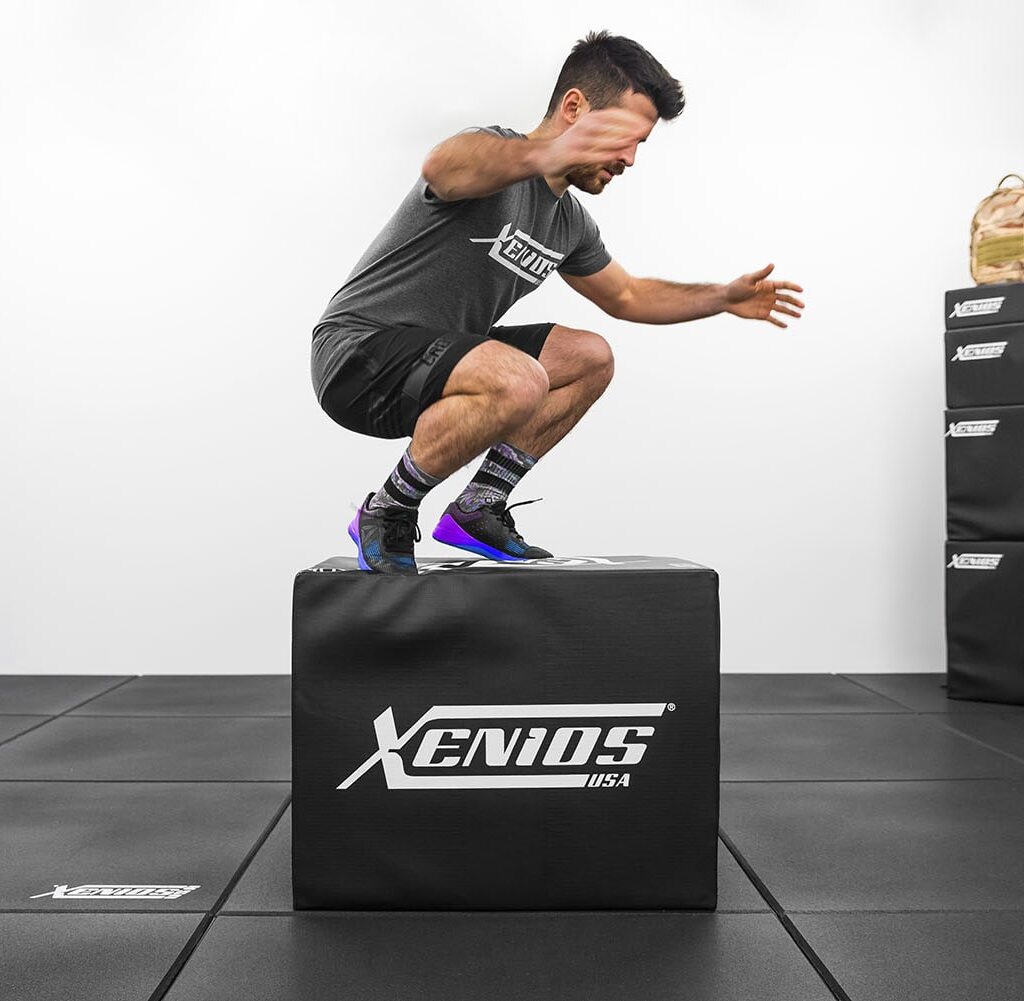
FP
Okay, thank you for this clarification. In addition to having an impressive fitness curriculum, you’re primarily a high-level personal trainer, so I’d like to understand and help our listeners understand the advantages of using a functional approach in training compared to a theoretical approach with clients.
CF
They are fundamental as far as I’m concerned.
In 99 percent of cases, when a client comes to you, the first things they ask for are… maybe not in my case, because they already know that I deal with rehabilitation to some extent and therefore many come for that, but in 99 percent of cases, those who come ask you: “I want to lose weight, I want to gain more muscles”…
FP
And women often say, “no big legs”…
CF
The next book I want to write is about the common misconceptions I’ve heard in these 35 years in gyms or while traveling around Europe. It’s fantastic, they ask you for this, but the first thing I do and recommend when I provide training to all my colleagues and anyone who wants to become a personal trainer is to assess the functionality of that body. In other words, it’s 10 to 1, if I want to help you get lean and define your muscles a bit, I have to give you some resistance training.
Let’s not fool ourselves! Doing free weight squats makes it difficult for your glutes to grow unless you add resistance. Sometimes I smile, in the past two years with the pandemic I’ve seen it all, hours of fast, explosive, free weight squats with no resistance, no control. It’s hard to develop lean muscle mass that way. Let’s think of the glutes as one of the largest muscle groups in our body. So, the first thing you do, even if they’ve asked you to get lean, define, or increase lean mass, is to check their posture.
If their structure isn’t right, as soon as I add resistance, in 4 or 5 sessions they break down. The first thing I have to do is check if they have asymmetries, assess the weak areas through a series of tests. Actually, they often don’t know this, and I never say that I’m doing tests because when you tell someone they’re being tested, they prepare themselves. It’s like if I told you, “Okay, Francesco, now check your posture”, as soon as I say that, you’ll straighten up, lower your shoulders, and already look better. So, I don’t tell them that I’m testing them.
They consider it as a trial lesson, so they feel like they’ve had a workout. Actually, I haven’t trained them, I make them do some exercises and movements that help me identify their weaknesses. So, I first work on fixing those weaknesses, then I start adding resistance and give them exercises aligned with their requested goals. It definitely works because their shoulder discomfort, back pain, and knee pain disappear. Keep in mind that I believe 80-90% of people’s issues and discomfort are due to disuse atrophy, meaning they use their bodies improperly and too little.
And that’s why some people go for a CrossFit® class, for example… and then end up getting injured. It’s not because doing CrossFit® is wrong, it’s just that their bodies weren’t prepared for it. As good as the CrossFit® instructors may be, they don’t have the opportunity to individually correct someone’s body within a group setting. How can you do that? You’d have to stop the class, fix the person’s movements, and as much as you can offer modifications, it’s still difficult to manage within a group context.
FP
I see. So, in theory, a client who wants to do CrossFit® would benefit from first undergoing appropriate preparation with a personal trainer, especially one with a functional fitness focus for CrossFit®. At that point, you would be able to prepare them adequately…
CF
Exactly what I always try to convey to people. I work based on goals, so if that person’s goal is to get lean, feel better, be able to do a Crossfit® class decently and start seeing good results, I help them. We need to analyze which exercises they can’t do, what their body is lacking. So, I would recommend to everyone who wants to do Crossfit® or activities involving speed and heavy loads, to have personal sessions with a good trainer, because I already know that this will prevent injuries and allow them to progress and grow, which, in my opinion, is crucial.
FP
So the question, which is perhaps more suitable for the general audience rather than our audience, which is made up of trainers and professionals, in the field of personal training who can work with a functional approach and who is better off doing something else?
CF
Our industry has always been a bit of a jungle, always following the trends and fashions of the moment… having also been a technical director, so a trainer, I sometimes would see names on people’s resumes just because there was demand for that thing at that moment, and I’d think, “When did this person even take that training?” For sure, having a functional anatomical knowledge is foundational for everyone. You need to have a good understanding of things related to biomechanics in relation to movement and have studied in this direction, so, definitely yoga, pilates, courses that consider the body as a single unit.
It’s unlikely that someone who specializes in bodybuilding can offer this type of training because the work done with machines, even if they work with free weights, often involves sitting on benches and every time you have a stable support, you’re deactivating the activation of the whole body. This leads to localized hypertrophy development.
FP
Perhaps the question wasn’t clear. You are telling me who the trainer is, what qualifications the trainer should have, but the actual question is: which clients do you target with functional training and train using this methodology, and which ones do you prefer to work with other methods, if you use alternative approaches?
CF
No, because it doesn’t exist. In other words, I have people who want to increase lean mass, people who want to develop hypertrophy, people who want to improve function, define themselves, and people who want to regain function, but at the core there is integrated strength training. Without that, you can’t do anything else. So, essentially, all of them. I’m particularly known for my work because I primarily focus on one area and I don’t move around much in the gym, because I don’t use machines.
It’s not that I don’t know how to use machines, I’ve always said machines are “for dummies” meaning that they were designed and developed to be easily accessible to everyone. There’s even the typical client who says: “I can do everything, I don’t need it”, then thinks, “Why not just sit there…”. We see these things every day in clubs and around Italy, but it’s the same in Europe. Unless you tell me, “Calle, I want to compete in bodybuilding”, in that case your goal is localized hypertrophy because a bodybuilder’s competition is based on that, not on function but on aesthetics. So, in that case, you don’t need it. Not to mention the fact that, since I’ve trained a lot of bodybuilders, they eventually get tired if they don’t do some integrated strength training. However, I train all my clients only with free weight equipment.
I don’t use any type of machine, I don’t use any type of support, all my supports are all destabilizing, so I use fit balls, disk and gym, kettlebells.
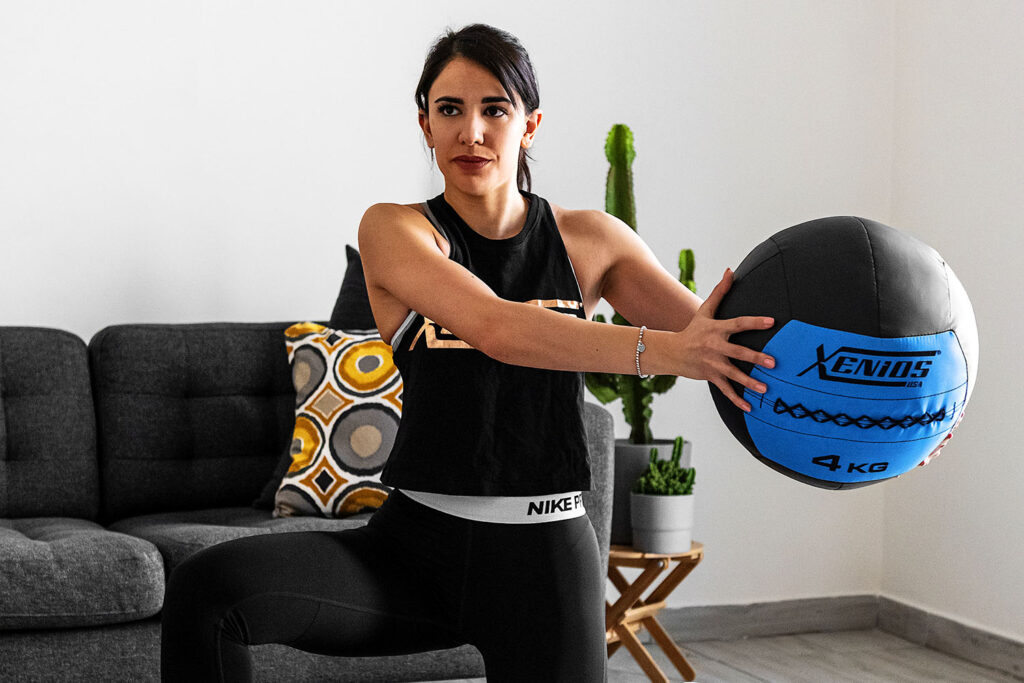
FP
I have to stop you because the next question would be precisely this:
Which functional tools do you use the most with your clients
CF
So, bodyweight exercises for sure, disk and gym that some people know by the name of disk ab, fit ball, fantastic for recovery and rehabilitation. Kettlebells, I love them, you’ve known that for a long time, I was one of the first to approach them with this concept. Clubbells, why not, I often use them. Dyna-bands, elastic bands, and that’s it.
I don’t use other things. I almost never use dumbbells for one simple reason: dumbbells are okay, I have nothing against them just as I have nothing against other equipment. I almost never use dumbbells because in this case I use kettlebells. The weight of kettlebells is off-center and when you work with kettlebells, there are no dead angles of work.
And that’s why, let me give you an example that I use in almost all my courses, if you were doing a bicep curl, with a dumbbell where the weights are distributed to the sides, you have the maximum force expression up to 90 degrees. After that, the weight starts to drop because you don’t feel it anymore, as you’re getting closer to the fulcrum point. In the case of a kettlebell, if you hold it there, the weight is already off-center and you’re working until the end. This happens in almost all cases. So, I mostly use kettlebells not just for ballistic kettlebell exercises, but also for strength exercises because taking them in a certain way can drastically change the type of work, and being an off-center weight, it forces you to activate somehow your spinal erectors, your quadratus lumborum, and all the deep abdominal muscles, making it an exercise of integrated contraction.
FP
Ok, here I’ll pick up on this word because you talked about it, you were the first to mention it and that intrigued me. I’d like to help those who are listening to understand the difference between integrated strength and functional training, if there is a difference, or what are the similarities and characteristics.
CF
Actually, integrated strength training is functional. It’s just that over the years, like all trends, functional training has been thrown into the mix without necessarily considering how functional it is and, more importantly, functional for what purpose. Your function might be different from mine or from a 50-year-old woman coming to the gym.
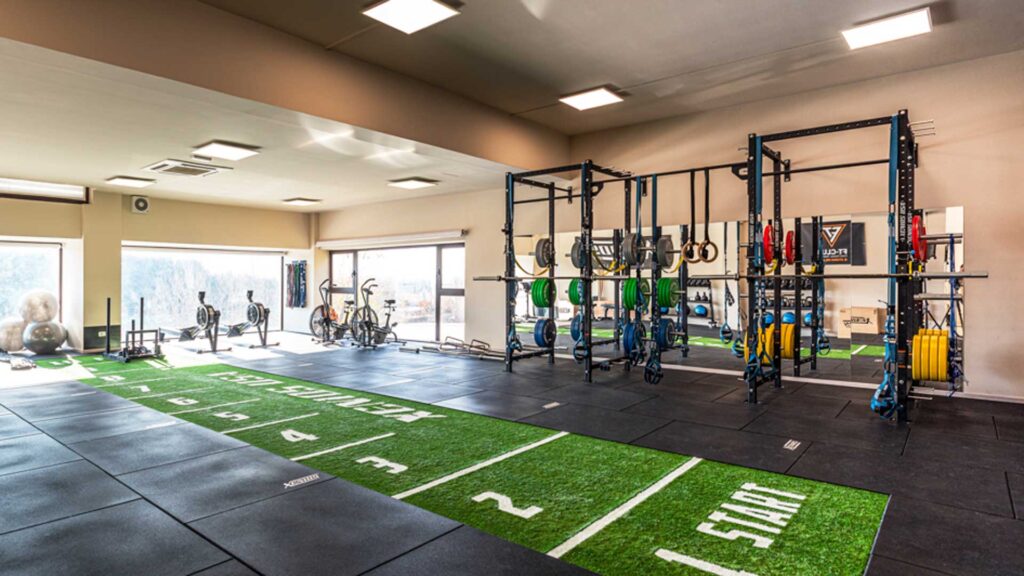
FP
I find this emphasis on the functionality of training, this mantra that functional training helps with movements in life, a bit overblown because if someone works as an office worker in their life, as we discussed with Guido in the last episode, we’re not training them to use a computer mouse.
So, in my opinion, functional training starts from another principle, which is training movement, being able to move, because our bodies are not accustomed to moving enough.
CF
Exactly what I try to explain to everyone during my workshops with my clients. For example, I explain something to my clients while they’re working, okay? I don’t have this sort of something that many personal trainers have, this kind of professional secret as if we were druids who dispense knowledge. No, I explain things to them, also one of the things I really like is that I create a workout plan for my clients because I want to teach them how to train. I’m not interested in keeping people with me for life. They will stay with me for life if they need me for life.
If they stay for a lifetime with the same goal, it means I did a bad job, I wasn’t good, and that means I’m not that good. One of the things that is extremely important to me is that if you come to me with a goal, I have to try to achieve that goal in the shortest possible time. That’s how you can tell if someone is good. It’s pointless for you to come to me with back pain and after six months, you still have the same back pain.
I haven’t done well, I messed something up, I’m not good. There is no back pain that lasts six months, especially if you’re doing something about it. It means that what you’re doing is not okay.
FP
Yes, even more so if to overcome back pain, I’m forced to come to you for the rest of my life because that’s a kind of dependency that isn’t functional.
CF
Exactly, it’s not functional. Well said. What I tell everyone is precisely this. I don’t want you to stay with me for a lifetime. We work towards goals. So, you’ve come to me with back pain? Okay, I’ll help you with the back pain, but afterward, if you want to continue with me, the goal has to change: now I want to get lean, I want to get stronger, I want to prepare for that thing, so of course, we keep moving forward.
But at the same time, in the same context, I have to teach you how to train because if your back pain or shoulder pain or knee pain is not due to a contact injury, meaning you haven’t been hit or had a car accident, it’s most likely a trauma caused by a poor load distribution, a lack of movement, what is called disuse atrophy. So, I have to teach you so that you no longer need this thing. Okay? Something that many, of course, don’t do.
What I always explain to everyone is the threshold stimulus. Because, especially teaching yoga and Pilates for many years, there is this idea that some activities are gentle. This is not true, okay? Pilates has been distorted, twisted. If you see a class by Mr. Pilates himself, they were intense and fast. When I do Pilates, people sweat as if they were doing spinning, just to give you an idea.
FP
I can confirm that even the few Pilates lessons I’ve taken have been quite challenging. They were really tough experiences.
CF
What I explain to everyone, including my clients, is the concept of the threshold stimulus. Each of us has a threshold stimulus. Imagine a bar that represents your fitness level, your strength, or how far you can go. If I make you work below that bar, your body won’t change, it won’t adapt. Maybe you’ll feel something initially, but it won’t lead you to change. So, whether you want to focus on rehabilitation, definition, or hypertrophy, if you want your body to change I need to make you work above your threshold stimulus, which is often overlooked, but it is the rule of adaptation.
So, in my opinion, we should reset for a moment and return to the basic functions of the human body and focus on understanding those because once you know those, you understand the defense mechanisms of the human body. I use PNF techniques a lot, for example, and I didn’t invent them, I’m not a genius, you just have to study them and if you know your body and how it works, you can, in quotes, “cheat” it a bit.
So, how do you get rid of a muscle contraction? A muscle cannot be strong if it’s not flexible first. At the base of the functional performance pyramid lies flexibility and mobility. So, it’s useless to keep doing more and more weights and then spend the last 5 minutes of the training session doing minimal stretching, if that, and then leave because I’m not providing functionality. If you think about a simple walk, some muscles contract and others elongate. If the other muscles don’t elongate accordingly, your walk becomes distorted.
And this applies to any type of exercise. If I have to do a kettlebell swing, it’s true that I have to push, use my abdominals, engage the glutes, so there’s a phase of contraction and a phase of elongation. If I already have short hamstrings or a sort of thoracic kyphosis, it’s clear that I’m putting a load on the spine and the muscles may not be able to handle it.
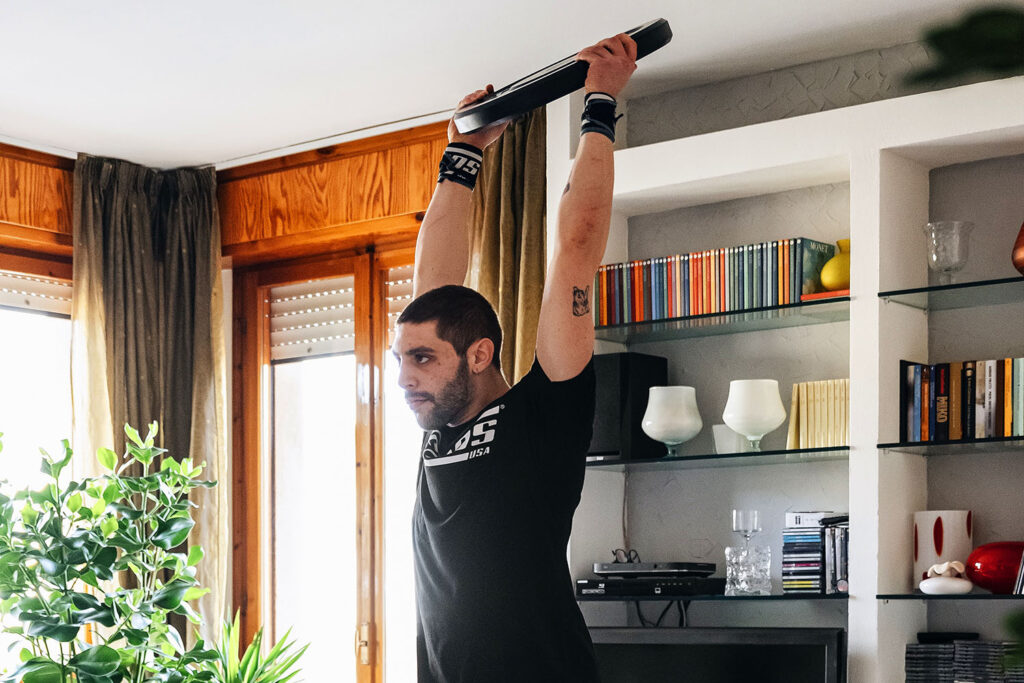
FP
Since I also want to be helpful to those who are listening, the other day you told me about a book that intrigued me a lot. Just mention the title, and we’ll add it in the written part later.
CF
Well, I read it in English, but I don’t know English well enough and have difficulty speaking it, despite having taken many courses abroad as you know. So what did I do? What I always like to do is buy the book in Italian if it’s worth it. I get it in Italian to see if I missed any parts if it is available because unfortunately many books aren’t always and I think this is one of the drawbacks we have in Italy. The Italian title is “Muovi il tuo DNA” and it intrigued me. It’s by an American researcher and trainer. It intrigued me a lot because I had read similar studies in the past, it talks about the difference between training and movement, so when we talk about integrated strength work, it’s fundamental. There’s a very nice example in the book, and I think you, me, and many others who are now listening have experienced it – we train like crazy.
We are in good shape because I work out at the bar twice a day. I do yoga, Pilates, and many other things, but in the morning we wake up feeling exhausted. Many of us have experienced this at times. Perhaps there is something wrong, or beyond the Delayed Onset Muscle Soreness (DOMS), we sometimes have issues related to wear and tear or the type of work we’ve done, or even the preparation for the work we’ve done. For example, as much as I may know a lot of things, and it’s true, maybe I know them, I still have sometimes to train in an hour because I have a client before or after. And in that hour I have to change, work out, take a shower, and maybe even have a post-workout snack, so it becomes a bit complicated and it’s clear that sometimes something gets skipped.
That’s why I often use the kettlebell, because it lends itself to intense yet compact workouts. “Move Your DNA” has intrigued me because it talks about the distribution of forces on every single cell of the body during training. I recommend it because I really enjoyed it. It’s explained very well with reputable scientific research, not someone who improvised and wrote a few things. It delves into how the lung tissue or cardiac tissue changes and how the load is distributed on every single cell of the body.
I’ll give an example that is also discussed in the book. I’m doing shoulder exercises, but my feet are also holding something, and my glutes are working too, so there is this sort of distribution of loads. It’s what we were talking about last time, organic training that has a functional aspect to it. Or rather, integrated strength training is inherently organic because integration leaves nothing to chance. I mean, when I do integrated strength training, I have to use my breath in a certain way that helps me, so I’m working while thinking about involving more things, which is something we generally don’t think about during training.
FP
Essentially, thinking that we are a system and not just a musculoskeletal apparatus.
CF
Exactly, medicine has always done this, right? They raised us this way, they always divided, dissected our bodies into pieces. I believe that in another life I might have been a doctor if I had studied, because I really like the human body. I remember that when I was 16 or 17 years old, I used to buy books from Minerva Medica, which is a store in Turin where all those medical students would go, and I still have a series of those books. I remember that when they talked about the abdomen, it was divided into 4 or 6 pieces to describe it, to identify the part where the pain is, and so on. Not necessarily when my shoulder hurts, it’s the shoulder’s fault, okay? I have to go look for it. Unless I hit my shoulder.
FP
We need to consider ourselves as complex systems and we need to know as much as possible about everything. Here’s an idea that comes to mind, then I’ll conclude because we’re already running out of time. Specific knowledge is no longer as important as knowing various aspects. So, the personal trainer of the future who wants to truly train in a functional way, must be an expert not only in muscles and the skeletal system, but in the entire system. When I say “system” I include the psychological and emotional aspects of the client, the ability to communicate.
I’m closing with this because we’ve almost exceeded the time limit.
I thank Calle for being with us. Greetings to everyone, good training to all, see you next episode. Goodbye.
CF
Thank you, goodbye everyone!

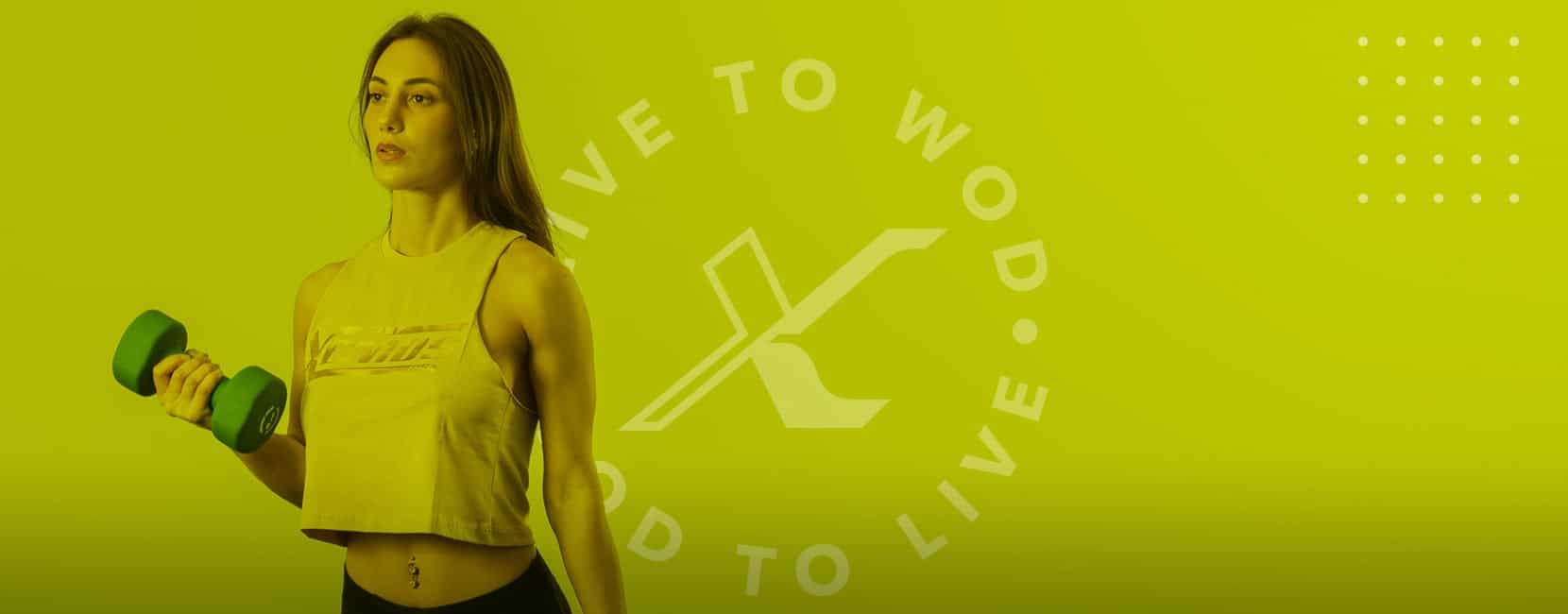
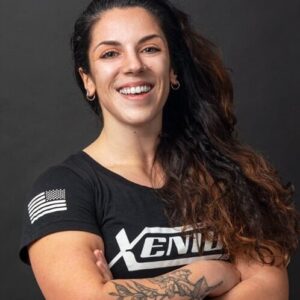
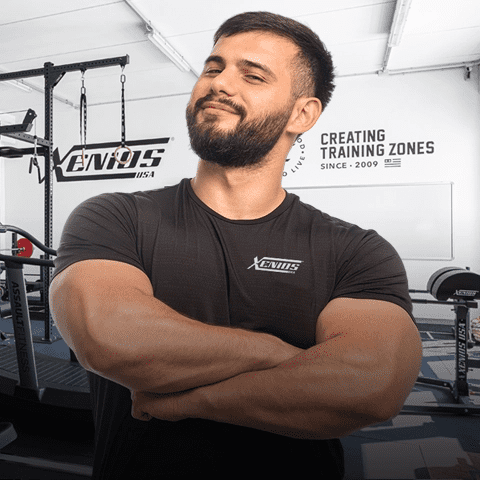
 Since 2009, we’ve been by your side, helping you create the perfect training spaces for Cross Training Boxes, Personal Trainer Studios, and professional Home Gyms.
Since 2009, we’ve been by your side, helping you create the perfect training spaces for Cross Training Boxes, Personal Trainer Studios, and professional Home Gyms.

